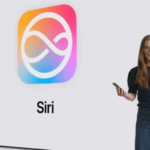
Creating Compelling Content: The Heart of Digital Marketing
In the world of digital marketing, content is more than just a means to convey information; it is a powerful tool that shapes your brand’s identity, engages your audience, and drives conversions. Compelling content can make the difference between a campaign that resonates and one that falls flat. This blog explores the significance of content in digital marketing, how to create content that captivates, and the strategies to make it work for your business.
What is Compelling Content?
Compelling content is not just about being informative—it’s about creating material that is interesting, engaging, and valuable to your audience. It connects emotionally, answers questions, solves problems, and encourages interaction. Whether it’s a blog post, video, social media update, or email, compelling content should always aim to add value and drive action.
Why is Compelling Content Essential in Digital Marketing?
- Drives Audience Engagement
Content that resonates with your audience keeps them engaged and encourages them to interact with your brand. This could be through likes, shares, comments, or conversions. - Builds Brand Authority
High-quality content positions your brand as a thought leader in your industry. It shows that you understand your audience’s needs and have the expertise to address them. - Enhances SEO Efforts
Search engines prioritize content that is valuable and relevant. Creating compelling content can improve your website’s search engine rankings, driving more organic traffic. - Supports Lead Generation and Conversions
Compelling content guides users through the customer journey by providing the information they need at each stage, from awareness to decision-making. - Nurtures Customer Relationships
Content that provides value keeps customers coming back for more. It fosters loyalty by continually meeting their needs and expectations.
Listicle: Top 7 Tips for Creating Compelling Content
- Know Your Audience
Understanding your target audience is the foundation of effective content creation. Research their preferences, challenges, and interests to create content that resonates. - Craft Attention-Grabbing Headlines
The headline is the first thing readers see, and it determines whether they’ll click through to read more. Make sure your headlines are intriguing and clearly communicate the value of the content. - Use Storytelling Techniques
People relate to stories. Incorporate storytelling elements into your content to make it more relatable and engaging. Personal anecdotes, customer success stories, or hypothetical scenarios can add depth. - Incorporate Visual Elements
Visuals like images, infographics, and videos enhance content appeal and make complex information easier to understand. - Provide Actionable Insights
Don’t just share information—offer practical advice or steps that readers can take. Actionable content adds more value and positions your brand as a useful resource. - Optimize for SEO
Incorporate relevant keywords, use internal and external links, and ensure your content is well-structured with proper headings. This improves search engine rankings and makes your content more discoverable. - Maintain a Consistent Tone and Style
Your content should reflect your brand’s personality. Whether it’s professional, casual, or humorous, maintaining a consistent tone helps in building brand identity.
Feature Snippet: The Role of Content in Driving Digital Marketing Success
Content is the backbone of digital marketing, serving as the primary means of communication between brands and consumers. By creating content that is informative, engaging, and optimized for search engines, businesses can build relationships, enhance their online presence, and achieve their marketing goals.
Table: Comparison of Different Content Types
| Content Type | Benefits | Best Use Cases |
|---|---|---|
| Blog Posts | Improves SEO, establishes authority | Sharing in-depth information, industry insights |
| Social Media Posts | Increases engagement, fosters community | Quick updates, promotions, brand awareness |
| Videos | Highly engaging, versatile | Product demonstrations, tutorials, storytelling |
| Infographics | Simplifies complex information, visually appealing | Data visualization, statistics, step-by-step guides |
| Podcasts | Builds a loyal audience, enhances thought leadership | Discussions, interviews, expert opinions |
| E-books/Whitepapers | Captures leads, demonstrates expertise | In-depth guides, comprehensive studies |
Creating Content that Converts: Strategies to Follow
- Leverage User-Generated Content (UGC)
User-generated content such as customer reviews, testimonials, and social media posts can add authenticity and trust to your brand. Encourage users to share their experiences and feature their content on your channels. - Utilize Content Personalization
Personalized content caters to individual preferences, increasing the likelihood of engagement. Use data-driven insights to tailor content based on user behavior, demographics, and interests. - Focus on Content Distribution
Creating great content is only half the battle. Distribute your content across multiple platforms like social media, email newsletters, and partnerships to maximize reach. - Include a Strong Call-to-Action (CTA)
Guide your audience on what to do next with a clear and compelling CTA. Whether it’s subscribing to a newsletter, downloading an e-book, or purchasing a product, a well-crafted CTA can drive conversions. - Refresh and Repurpose Old Content
Don’t let old content go to waste. Update and republish evergreen content, or repurpose it into different formats (e.g., turning a blog post into a video or infographic) to reach a broader audience.
Common Content Creation Mistakes and How to Avoid Them
- Creating Content Without a Clear Goal
Always define the purpose of your content. Whether it’s for brand awareness, lead generation, or customer retention, knowing your goal helps in crafting relevant content. - Neglecting Mobile Optimization
With a significant portion of users accessing content via mobile devices, ensure that your content is mobile-friendly. - Overlooking SEO Practices
Not incorporating SEO strategies can limit the reach of your content. Make sure your content is optimized for relevant keywords and search intent. - Focusing Solely on Selling
Content should not be overly promotional. Aim to provide value, educate, or entertain your audience rather than just pushing sales. - Inconsistent Posting Schedule
A sporadic posting schedule can hinder audience engagement. Plan your content calendar and stick to a consistent publishing routine.
Measuring the Success of Your Content
- Engagement Metrics: Track likes, shares, comments, and time spent on the page to gauge content interaction.
- Conversion Rates: Measure the number of users who take a desired action, such as subscribing or making a purchase.
- SEO Performance: Monitor organic traffic, keyword rankings, and backlink profiles to understand the content’s impact on search engine visibility.
- Social Media Shares: The number of shares on social platforms can indicate how well your content resonates with your audience.
- Lead Generation: Evaluate the number of leads generated through content such as gated e-books, webinars, or newsletters.
The Future of Content Marketing
Content marketing is continually evolving, with new trends and technologies reshaping the landscape. Here’s what to expect in the future:
- Rise of AI-Powered Content Creation
Artificial intelligence can help streamline content creation processes, from generating topic ideas to personalizing content. - Interactive Content
Content formats like quizzes, polls, and interactive infographics are gaining popularity for their ability to engage users actively. - Focus on Voice Search Optimization
With the increasing use of voice-activated devices, optimizing content for voice search will become crucial. - Short-Form Video Content
Platforms like TikTok and Instagram Reels have shown the effectiveness of short-form videos in capturing attention. Expect more brands to adopt this format.
Conclusion
Creating compelling content is at the heart of digital marketing success. It helps attract, engage, and convert audiences by providing value, addressing their needs, and guiding them through the customer journey. Implement these content strategies and best practices to enhance your digital marketing efforts and drive meaningful results.















